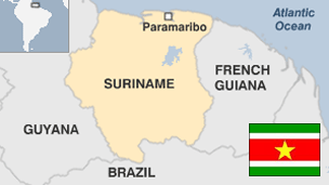
Facts and stats about Suriname
The government of Suriname has implemented a potent domestic adjustment program that is helping to rejuvenate its economy after the global slowdown. International Monetary Fund economists reviewed steps carried out by economic leaders and noted the nation’s major achievements which included the integration of the foreign exchange market, price stability, and substantial fiscal gains.
The latest experience of Suriname with macroeconomic stabilization is a positive example for the Caribbean region on how significant and comprehensive adjustment is possible. The key factor is the resolve of government to put into action its plans. According to the IMF, economic activity remains sound and inflation pressures have subsided considerably. Suriname is estimated to have grown by four percent in 2012 mainly because of the performance of oil and gold industries as well as public investment. Suriname was not totally spared by the international monetary crisis since it affected the country’s trade channel.
Suriname is situated along the northeastern coast of South America with a population of 530,000. It depends on three basic products which are gold, oil, and alumina making up 95 percent of total exports. The new government which assumed power three years ago prioritized the resolution of the exchange rate imbalance within the framework of a complete adjustment program. With inflation a problem and foreign currency limited in the commercial market, Surinamese officials worked hard to bring back domestic balance and price stability. Government also realized the need for tight monetary and fiscal policies to avoid the escalation of price increases. The IMF-backed adjustment program was quickly employed beginning with a 20 percent devaluation of the Suriname dollar. The authorities increased taxes on domestic fuel, gambling, alcohol, and tobacco. It also introduced temporary subsidies and kept spending under tight control.
- Agriculture 106
- Background 8
- Cost of living 49
- Crime 36
- Culture 15
- Economy 2003
- Education 560
- Energy 409
- Environment 138
- Geography 80
- Government 155
- Health 280
- Import 1
566,846
Population. Ranked 170th in 2013.
$8,864.02
GDP per capita. Ranked 64th in 2012.

156,000 sq km
Sq. km. Ranked 88th in 2008.